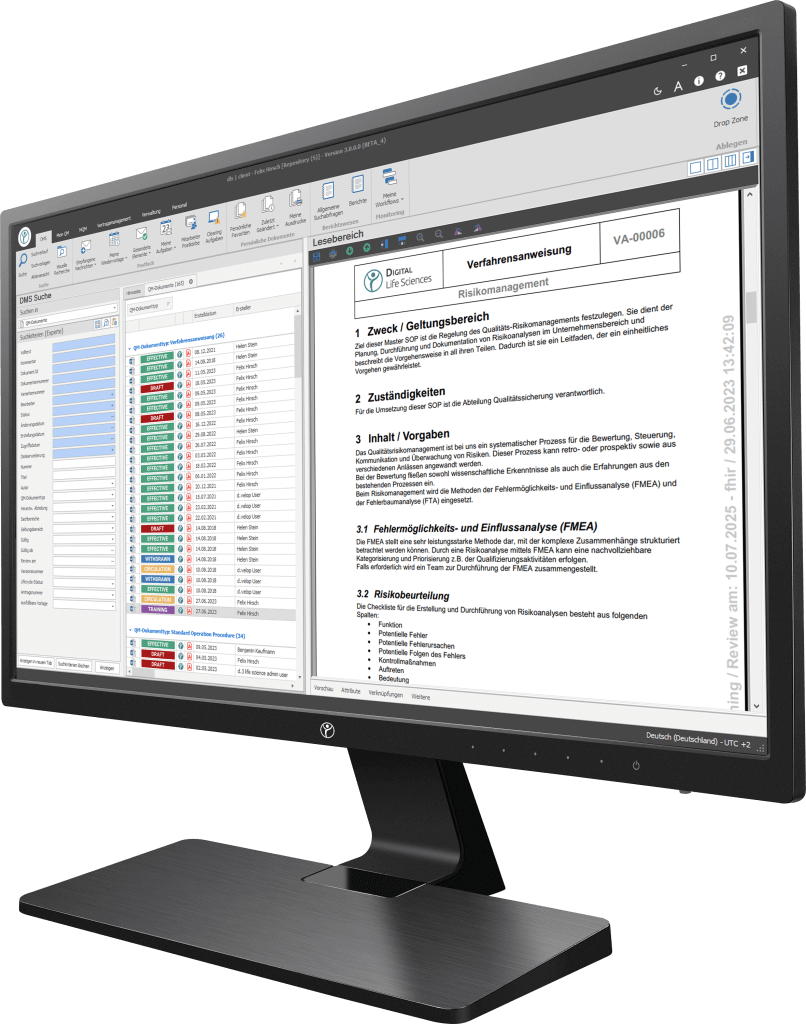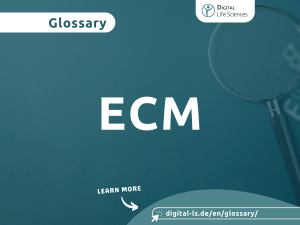Definition of the term ("What is the WHO Good Practice Guideline for Data and Records Management?")
The WHO Good Practice Guideline for Data and Records Management is of utmost significance to the healthcare industry as it sets standards and recommendations that ensure the quality and integrity of data and records in medical research and practice. The guideline contains detailed and clear explanations on implementation and, thus, closes supposed gaps in other guidelines. It also explains how the regulatory requirements affect practice and what should be demonstrably implemented to meet all requirements. In particular, the application of data management procedures will be addressed. It is fundamentally specified to use a systematic approach which guarantees that all GxP records are comprehensive and reliable during the entire lifecycle.
The significance of data and records management
- Data and records in the healthcare industry: The healthcare industry relies heavily on accurate and reliable data and records. This information is crucial for disease diagnosis, treatment and research. The WHO Good Practice Guideline for Data and Records Management aims to improve the quality of these data and records.
- Trust in data: Trust in the accuracy and integrity of health data and records is of greatest importance to doctors, researchers, and patients. The WHO guideline helps to build this confidence.
- Research and development: High-quality data is essential in medical research. The guideline supports best practice in data management in order to improve the quality of research results.
What does the guideline contain?
- Data management guidelines: The guideline provides clear guidelines for data management, including data collection, storage, and transmission. These guidelines aim to ensure that data is recorded and stored correctly.
- Security standards: The security of health data is of utmost significance. The guideline establishes security standards to ensure the protection of sensitive information.
- Training: Training is necessary to successfully implement the guideline.
Your path to digitization - Discover our software
Our digitization solutions primarily address document-based processes in manufacturing, production and quality management. The basis of the dls | eQMS is a holistic ECM/DMS system. The ECM/DMS system can be connected to your existing ERP system (e.g. SAP) and thus map almost all document-based processes in the company.

Why is this guideline important?
The WHO Good Practice Guideline on Data and Records Management is of major importance for several reasons:
- Quality assurance: It ensures the quality of health data and records.
- Trust: It builds confidence in the accuracy and integrity of health information.
- Research funding: It promotes high-quality research and development in medicine.
- Protecting sensitive information: It ensures the security and protection of sensitive health data.
- Improved patient care: It helps to improve patient care by providing doctors and medical staff with accurate data.
Why is chapter 7 of the WHO guideline so important?
Chapter 7 of the guideline deals with contracting companies, suppliers, and service providers. Due to the increasing assignment of GxP tasks, it is necessary, according to the WHO, to define and consistently manage roles and responsibilities. The security of the comprehensive and correct data and records during the working relationship must be mutually guaranteed. The responsible parties of the contracting entity and contractor shall comprehensively determine which processes must be initiated to ensure the integrity of the data. These details should be included in a contract to be concluded for the outsourced work.
What if the deployment of the software is outsourced?
If the provision of databases and software is outsourced, the contracting entity must make sure that the contractors are approved, specified in the quality agreement, and adequately qualified and trained in the GxP environment. The outsourced activities must be monitored regularly and the controlling intervals must be specified as part of the risk evaluation.
Conclusion
The WHO Good Practice Guideline for Data and Records Management is a milestone in the healthcare industry. It sets standards that improve the quality and security of health data and increase trust in that data. The implementation of this guideline is critical to the future of medical research and practice.
Start your digital transformation with our powerful, modular software solutions
Frequently Asked Questions (FAQs)
Who adhere to the guideline?
The guideline should be followed by all healthcare professionals involved in the collection and management of health data and records.
Does the guideline apply worldwide?
Yes, the WHO guideline applies worldwide and sets international standards for data and records management.
Are there penalties for non-compliance with the guideline?
The guideline does not specify any particular penalties, but compliance is strongly recommended to ensure the quality and integrity of health data.
How can healthcare facilities implement the guideline?
Healthcare facilities should organize training and education for their staff to successfully implement the guideline.
Are there resources to help to implement the guideline?
Yes, WHO offers training materials and resources to facilitate the implementation of the guideline.

